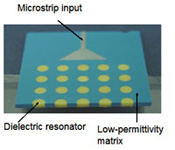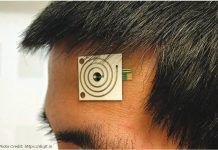
 Could you imagine that a scientist at Michigan Technological University would be serious about building a working invisibility cloak? I suppose no, but that’s exactly what Dr. Elena Semouchkina, an associate professor of electrical and computer engineering at Michigan Tech, is doing. She founds ways to use magnetic resonance to capture rays of visible light and route them around objects, rendering those objects invisible to the human eye.
Could you imagine that a scientist at Michigan Technological University would be serious about building a working invisibility cloak? I suppose no, but that’s exactly what Dr. Elena Semouchkina, an associate professor of electrical and computer engineering at Michigan Tech, is doing. She founds ways to use magnetic resonance to capture rays of visible light and route them around objects, rendering those objects invisible to the human eye.
Dr. Semouchkina and colleagues at the Pennsylvania State University, where she is also an adjunct professor, recently reported on their research in the journal Applied Physics Letters, published by the American Institute of Physics and they describe developing a nonmetallic cloak that uses identical glass resonators made of chalcogenide glass, a type of dielectric material. In computer simulations, the cloak made objects hit by infrared waves—approximately one micron or one-millionth of a meter long—disappear from view.
 Her invisibility cloak uses metamaterials, which are artificial materials having properties that do not exist in nature, made of tiny glass resonators arranged in a concentric pattern in the shape of a cylinder. The “spokes” of the concentric configuration produce the magnetic resonance required to bend light waves around an object, making it invisible.
Her invisibility cloak uses metamaterials, which are artificial materials having properties that do not exist in nature, made of tiny glass resonators arranged in a concentric pattern in the shape of a cylinder. The “spokes” of the concentric configuration produce the magnetic resonance required to bend light waves around an object, making it invisible.
Metamaterials, which use small resonators instead of atoms or molecules of natural materials, straddle the boundary between materials science and electrical engineering. They were named one of the top three physics discoveries of the decade by the American Physical Society.
Dr. Semouchkina and her team now are testing an invisibility cloak re-scaled to work at microwave frequencies and made of ceramic resonators. They’re using Michigan Tech’s anechoic chamber, a cave-like compartment in an Electrical Energy Resources Center lab, lined with highly absorbent charcoal-gray foam cones. There, antennas transmit and receive microwaves, which are much longer than infrared light, up to several centimeters long. They have cloaked metal cylinders 2-3 inches in diameter and 3-4 inches high.
 “Starting from these experiments, we want to move to higher frequencies and smaller wavelengths,” the researcher said. “The most exciting applications will be at the frequencies of visible light.”
“Starting from these experiments, we want to move to higher frequencies and smaller wavelengths,” the researcher said. “The most exciting applications will be at the frequencies of visible light.”
So one day, could the police cloak a swat team or the Army, a tank? “It is possible in principle, but not at this time,” Dr. Semouchkina said. So, will see in the future how far the scientist lead us.



